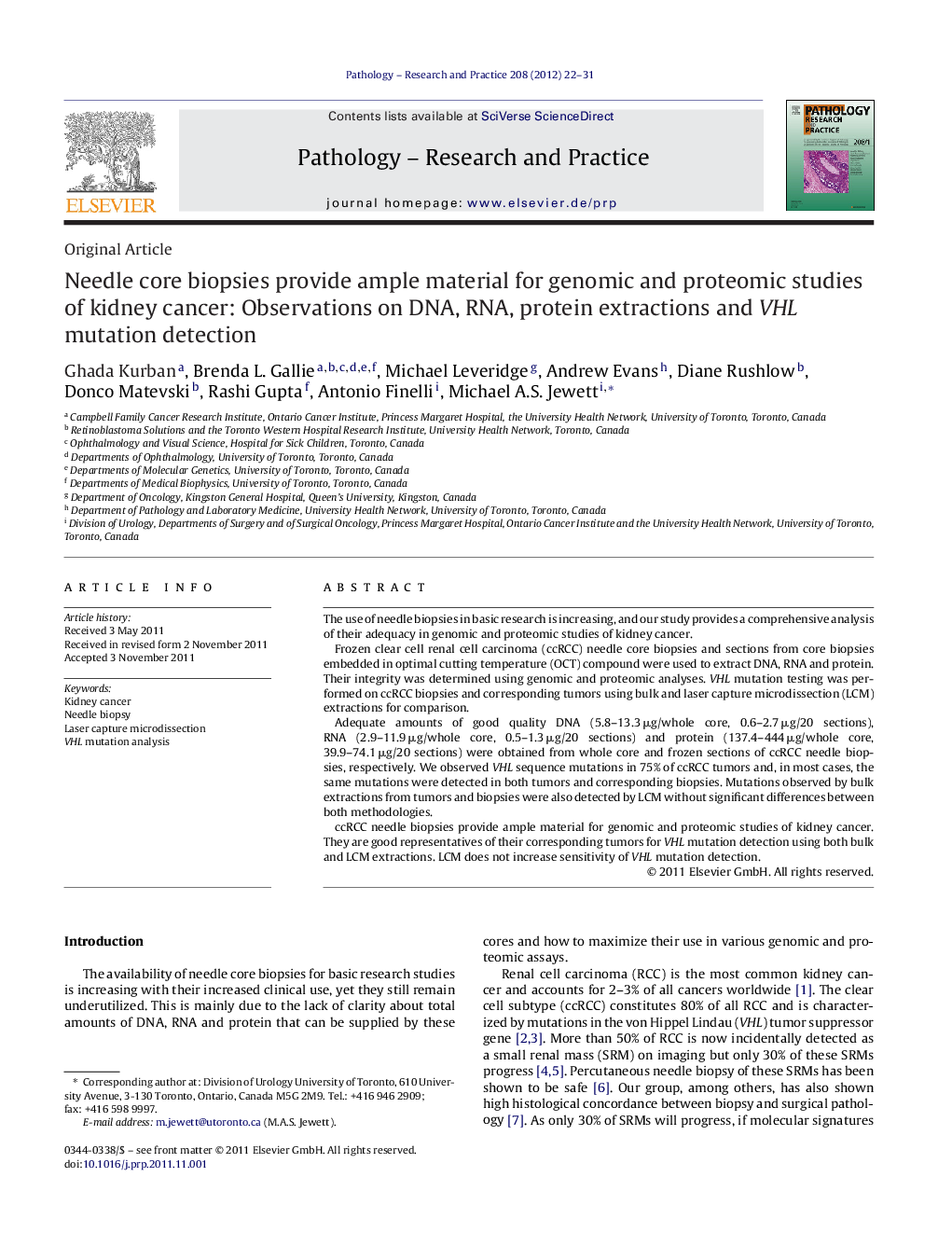| Article ID | Journal | Published Year | Pages | File Type |
|---|---|---|---|---|
| 2155882 | Pathology - Research and Practice | 2012 | 10 Pages |
The use of needle biopsies in basic research is increasing, and our study provides a comprehensive analysis of their adequacy in genomic and proteomic studies of kidney cancer.Frozen clear cell renal cell carcinoma (ccRCC) needle core biopsies and sections from core biopsies embedded in optimal cutting temperature (OCT) compound were used to extract DNA, RNA and protein. Their integrity was determined using genomic and proteomic analyses. VHL mutation testing was performed on ccRCC biopsies and corresponding tumors using bulk and laser capture microdissection (LCM) extractions for comparison.Adequate amounts of good quality DNA (5.8–13.3 μg/whole core, 0.6–2.7 μg/20 sections), RNA (2.9–11.9 μg/whole core, 0.5–1.3 μg/20 sections) and protein (137.4–444 μg/whole core, 39.9–74.1 μg/20 sections) were obtained from whole core and frozen sections of ccRCC needle biopsies, respectively. We observed VHL sequence mutations in 75% of ccRCC tumors and, in most cases, the same mutations were detected in both tumors and corresponding biopsies. Mutations observed by bulk extractions from tumors and biopsies were also detected by LCM without significant differences between both methodologies.ccRCC needle biopsies provide ample material for genomic and proteomic studies of kidney cancer. They are good representatives of their corresponding tumors for VHL mutation detection using both bulk and LCM extractions. LCM does not increase sensitivity of VHL mutation detection.
